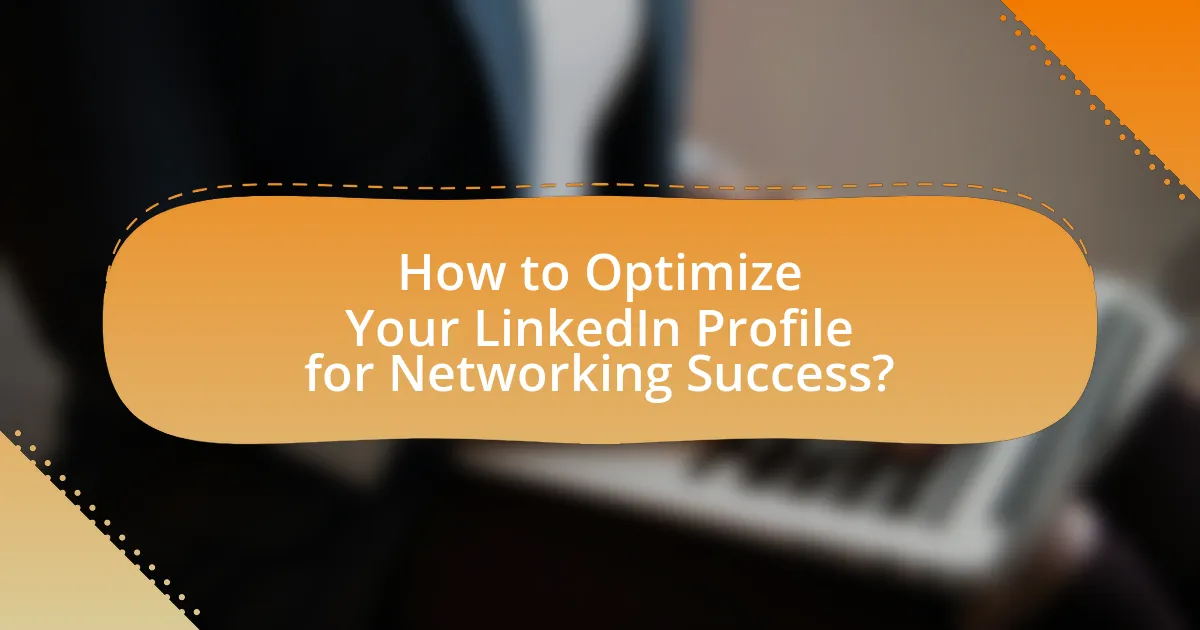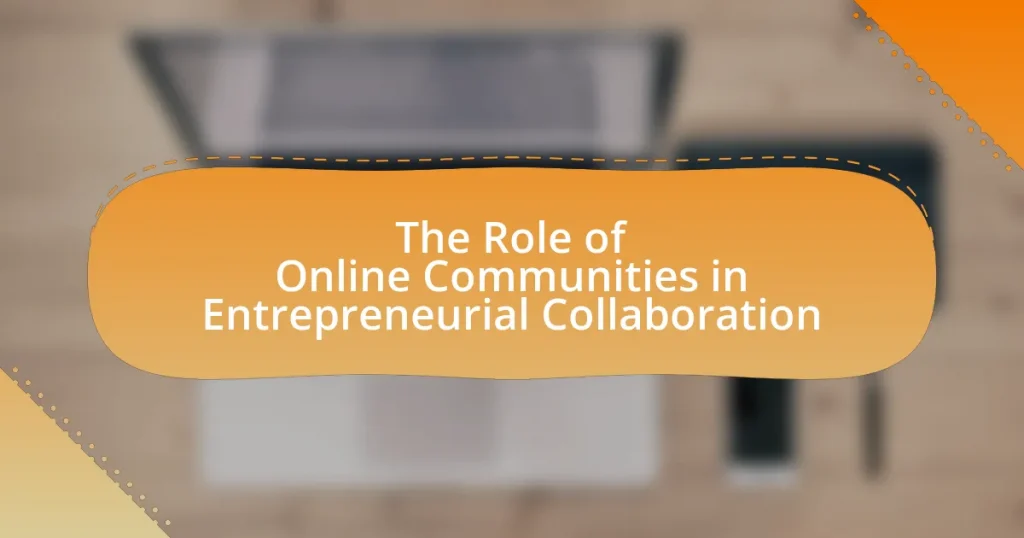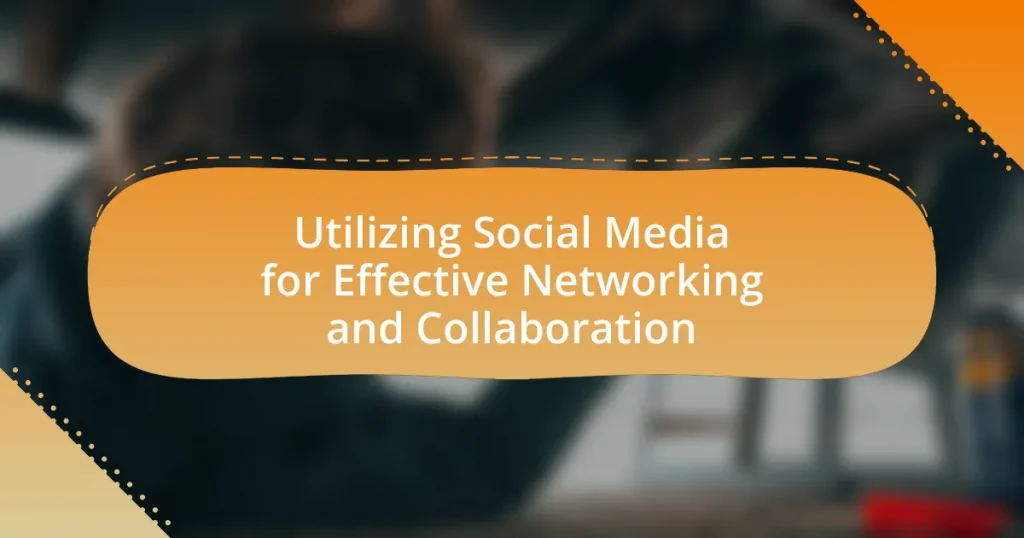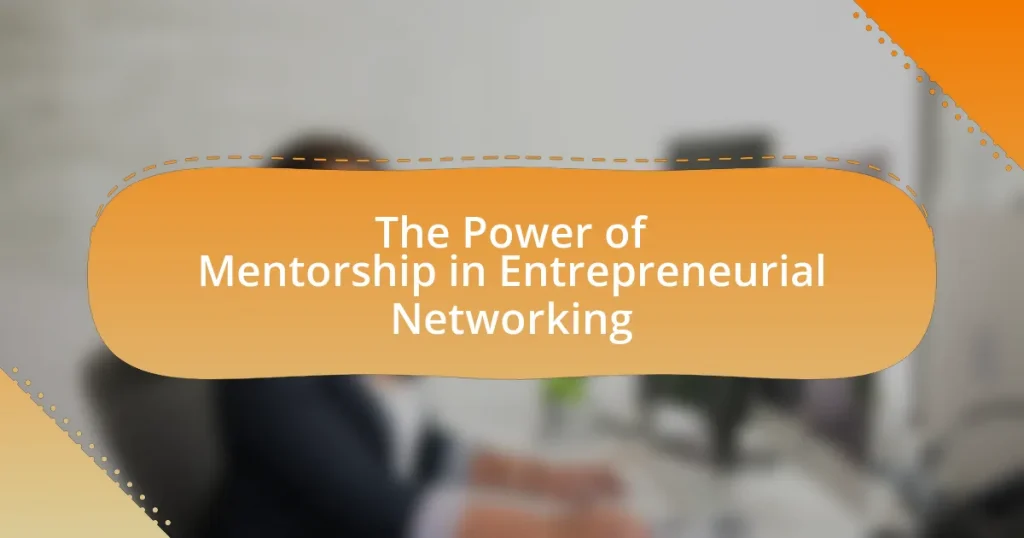LinkedIn is a professional networking platform essential for business networking, with over 900 million members, including 61 million senior-level influencers. The article explores how LinkedIn facilitates professional networking through features such as connection requests, endorsements, and groups, enhancing visibility and engagement. It outlines strategies for optimizing LinkedIn profiles, effectively networking, and maintaining connections, while also comparing LinkedIn to other social media platforms. Key benefits of using LinkedIn for networking include increased visibility, targeted connections, and access to industry insights, making it a vital tool for career development and professional relationships.

What is LinkedIn and Why is it Important for Networking in Business?
LinkedIn is a professional networking platform that connects individuals and businesses, facilitating career development and professional relationships. It is important for networking in business because it allows users to build a professional online presence, connect with industry peers, and access job opportunities. According to LinkedIn’s own statistics, over 900 million members use the platform, making it a vital resource for professionals seeking to expand their networks and enhance their career prospects. Additionally, 61 million LinkedIn users are senior-level influencers, highlighting the platform’s significance in reaching decision-makers and fostering business relationships.
How does LinkedIn facilitate professional networking?
LinkedIn facilitates professional networking by providing a platform for users to connect, share, and engage with industry professionals. The platform allows individuals to create detailed profiles showcasing their skills, experiences, and achievements, which enhances visibility among peers and potential employers. LinkedIn’s features, such as connection requests, endorsements, and recommendations, enable users to build and strengthen their professional relationships. Additionally, the platform hosts groups and discussions that foster collaboration and knowledge sharing within specific industries. According to LinkedIn’s own statistics, over 700 million professionals use the platform, highlighting its significance as a networking tool in the business world.
What features of LinkedIn enhance networking opportunities?
LinkedIn enhances networking opportunities through features such as connection requests, messaging, groups, and endorsements. Connection requests allow users to expand their professional network by inviting others to connect, facilitating direct communication. The messaging feature enables users to engage in private conversations, fostering relationships and collaboration. Groups provide a platform for like-minded professionals to share insights and network within specific industries or interests, enhancing visibility and engagement. Endorsements allow users to validate each other’s skills, building credibility and trust within their network. These features collectively create a robust environment for professional networking and relationship building.
How does LinkedIn compare to other networking platforms?
LinkedIn is primarily a professional networking platform, distinguishing itself from other networking platforms by focusing on career development and business connections. Unlike social media platforms such as Facebook or Instagram, which emphasize personal interactions and content sharing, LinkedIn facilitates professional relationships through features like job postings, industry-specific groups, and a robust profile showcasing work experience and skills. According to a 2021 report by Statista, LinkedIn had over 774 million users, making it the largest professional network globally, which underscores its significance in the job market and professional networking. This focus on professional growth and opportunities sets LinkedIn apart from platforms that cater to broader social interactions.
What are the key benefits of using LinkedIn for business networking?
The key benefits of using LinkedIn for business networking include enhanced visibility, targeted connections, and access to industry insights. LinkedIn allows professionals to showcase their skills and experiences, increasing their visibility to potential clients and partners. The platform’s advanced search features enable users to connect with specific individuals or groups relevant to their industry, facilitating targeted networking opportunities. Additionally, LinkedIn provides access to a wealth of industry-related content and discussions, helping users stay informed about trends and best practices. According to LinkedIn’s own statistics, 92% of recruiters use the platform to find candidates, highlighting its effectiveness in professional networking.
How can LinkedIn help in building professional relationships?
LinkedIn helps in building professional relationships by providing a platform for users to connect, engage, and network with industry professionals. The platform allows users to create detailed profiles showcasing their skills, experiences, and accomplishments, which facilitates meaningful connections. According to LinkedIn’s own statistics, over 700 million professionals use the platform, making it a valuable resource for networking. Users can join industry-specific groups, participate in discussions, and share content, which enhances visibility and fosters relationships with like-minded professionals. Additionally, LinkedIn’s messaging feature enables direct communication, allowing users to reach out and establish connections effectively.
What role does LinkedIn play in personal branding?
LinkedIn plays a crucial role in personal branding by providing a professional platform for individuals to showcase their skills, experiences, and achievements. This social network allows users to create detailed profiles that highlight their career milestones, connect with industry professionals, and share relevant content, thereby enhancing their visibility and credibility in their respective fields. According to a survey by Jobvite, 87% of recruiters use LinkedIn to evaluate candidates, underscoring its significance in shaping professional reputations and networking opportunities.

How to Optimize Your LinkedIn Profile for Networking Success?
To optimize your LinkedIn profile for networking success, ensure your profile is complete, professional, and engaging. A complete profile includes a professional photo, a compelling headline, and a detailed summary that highlights your skills and experiences. According to LinkedIn, profiles with photos receive 21 times more profile views and 36 times more messages, emphasizing the importance of a professional image. Additionally, using relevant keywords in your summary and experience sections can improve your visibility in searches, making it easier for potential connections to find you. Engaging with content by sharing insights and commenting on posts can also enhance your networking opportunities, as active users are more likely to attract connections.
What elements should be included in a strong LinkedIn profile?
A strong LinkedIn profile should include a professional photo, a compelling headline, a detailed summary, relevant work experience, skills endorsements, and recommendations. A professional photo enhances credibility, while a compelling headline captures attention and conveys expertise. A detailed summary allows for personal branding and storytelling, showcasing achievements and career goals. Relevant work experience provides context and demonstrates qualifications, and skills endorsements validate expertise through peer recognition. Recommendations from colleagues or clients add social proof, enhancing trustworthiness. These elements collectively create a comprehensive and engaging profile that attracts networking opportunities and potential business connections.
How does a professional photo impact your profile’s effectiveness?
A professional photo significantly enhances your profile’s effectiveness by increasing visibility and engagement. Profiles with professional images receive 14 times more profile views and 36 times more messages, according to LinkedIn data. This visual representation establishes credibility and fosters trust, making connections more likely to engage with your content and reach out for networking opportunities.
What is the importance of a compelling headline and summary?
A compelling headline and summary are crucial for capturing attention and conveying value on LinkedIn. The headline serves as the first impression, influencing whether users engage with the content; studies show that 80% of readers never go beyond the headline. A well-crafted summary provides context, highlights key achievements, and establishes credibility, which can lead to increased connection requests and opportunities. According to LinkedIn data, profiles with strong summaries receive 40% more profile views, demonstrating the effectiveness of clear and engaging messaging in networking success.
How can you leverage recommendations and endorsements on LinkedIn?
You can leverage recommendations and endorsements on LinkedIn by actively seeking and giving them to enhance your professional credibility. Recommendations serve as testimonials from colleagues or clients that validate your skills and experiences, while endorsements highlight specific skills recognized by your network. Actively requesting recommendations from satisfied clients or colleagues can significantly boost your profile’s visibility and attractiveness to potential employers or clients. Additionally, endorsing others encourages reciprocity, leading to more endorsements for your own skills. According to LinkedIn data, profiles with recommendations receive 18 times more profile views, demonstrating their effectiveness in establishing trust and authority in your field.
What strategies can be used to request recommendations effectively?
To request recommendations effectively, individuals should personalize their requests by specifying the context and purpose of the recommendation. Personalization increases the likelihood of a positive response, as it shows respect for the recommender’s time and effort. For instance, mentioning specific projects or skills can guide the recommender in crafting a more relevant and impactful endorsement. Research indicates that tailored requests yield higher response rates, as they resonate more with the recipient’s experiences and insights. Additionally, following up with a thank-you note after receiving the recommendation reinforces professional relationships and encourages future interactions.
How do endorsements enhance your credibility on LinkedIn?
Endorsements enhance your credibility on LinkedIn by providing social proof of your skills and expertise. When connections endorse you, it signals to potential employers and clients that others recognize and validate your abilities, which can lead to increased trust and opportunities. According to a survey by LinkedIn, profiles with endorsements receive 14 times more profile views and 36 times more messages, demonstrating the significant impact endorsements have on visibility and engagement. This validation from peers not only strengthens your professional reputation but also differentiates you in a competitive job market.

What Strategies Can You Use to Network Effectively on LinkedIn?
To network effectively on LinkedIn, focus on personalizing connection requests, engaging with content, and participating in relevant groups. Personalizing connection requests increases acceptance rates, as a study by LinkedIn found that personalized messages can lead to a 50% higher chance of connection. Engaging with content by liking, commenting, and sharing posts helps build visibility and rapport with your network. Additionally, participating in industry-specific groups allows for meaningful interactions and knowledge sharing, which can lead to valuable connections. These strategies collectively enhance your networking success on LinkedIn.
How can you identify and connect with potential networking contacts?
To identify and connect with potential networking contacts, utilize LinkedIn’s search features to find individuals in your industry or related fields. By using specific keywords, filters such as location, industry, and current companies, you can narrow down your search to relevant professionals. Engaging with their content through likes, comments, or shares can initiate a connection, making it more likely they will accept your connection request. According to LinkedIn’s own data, users who personalize their connection requests are 80% more likely to receive a positive response.
What are the best practices for sending connection requests?
The best practices for sending connection requests include personalizing the message, clearly stating the reason for the connection, and keeping the request concise. Personalization increases the likelihood of acceptance; research shows that personalized connection requests are 50% more likely to be accepted compared to generic ones. Clearly stating the reason helps the recipient understand the value of connecting, while a concise message respects their time. Additionally, avoiding overly promotional language fosters a genuine connection, which is essential for effective networking on LinkedIn.
How can you engage with your network through content sharing?
Engaging with your network through content sharing involves consistently posting relevant, valuable content that resonates with your audience. By sharing industry insights, personal experiences, or curated articles, you foster discussions and encourage interactions, which strengthens relationships. Research indicates that posts with images receive 94% more views than text-only posts, highlighting the importance of visual content in engagement. Additionally, engaging with comments on your posts further enhances connection, as it shows you value your network’s input and fosters a sense of community.
What role do LinkedIn Groups play in networking?
LinkedIn Groups serve as a platform for professionals to connect, share insights, and collaborate within specific industries or interests, enhancing networking opportunities. These groups facilitate discussions, allow members to ask questions, and share resources, which fosters relationships among like-minded individuals. According to LinkedIn’s own data, members of groups are 70% more likely to engage with content and connect with others, demonstrating the effectiveness of groups in building professional networks.
How can you find and join relevant LinkedIn Groups?
To find and join relevant LinkedIn Groups, use the search bar at the top of your LinkedIn homepage to enter keywords related to your industry or interests. This action will display a list of groups that match your search criteria. Once you identify a group that aligns with your professional goals, click on the group name to view its details and select the “Join” button. According to LinkedIn’s own guidelines, joining groups can enhance networking opportunities and provide access to industry-specific discussions, making it a strategic move for business success.
What strategies can you use to participate actively in groups?
To participate actively in groups, engage consistently by contributing valuable insights and asking relevant questions. This approach fosters interaction and demonstrates your expertise, which can enhance your visibility within the group. Research indicates that active participation increases the likelihood of forming meaningful connections; for instance, a study by LinkedIn found that members who engage in discussions are 70% more likely to receive responses to their posts. Additionally, sharing resources and acknowledging others’ contributions can further solidify your presence and encourage collaborative dialogue.
What are the common mistakes to avoid when networking on LinkedIn?
Common mistakes to avoid when networking on LinkedIn include sending generic connection requests, failing to personalize messages, neglecting to engage with content, and not following up after initial interactions. Sending generic requests can lead to low acceptance rates, as personalized messages increase the likelihood of connection. Engaging with content, such as liking or commenting on posts, fosters relationships and visibility. Additionally, not following up can result in missed opportunities for deeper connections and collaborations. According to a study by LinkedIn, personalized connection requests are 80% more likely to be accepted, highlighting the importance of tailored communication in effective networking.
How can over-promoting yourself harm your networking efforts?
Over-promoting yourself can harm your networking efforts by creating a perception of insincerity and self-centeredness among your connections. When individuals excessively highlight their achievements or constantly seek attention, it can lead to others feeling alienated or undervalued, which diminishes trust and rapport. Research indicates that effective networking relies on mutual benefit and genuine relationships; thus, over-promotion disrupts this balance. For instance, a study published in the Journal of Business and Psychology found that authentic interactions foster stronger professional relationships, while self-serving behaviors can lead to social rejection.
What are the pitfalls of not personalizing connection requests?
Not personalizing connection requests can lead to lower acceptance rates and missed networking opportunities. When connection requests lack personalization, recipients may perceive them as spam or generic, resulting in a lack of interest in connecting. According to a study by LinkedIn, personalized connection requests are 80% more likely to be accepted compared to non-personalized ones. This statistic underscores the importance of tailoring messages to establish rapport and demonstrate genuine interest, which ultimately enhances networking success on platforms like LinkedIn.
What are the best practices for maintaining and nurturing your LinkedIn network?
The best practices for maintaining and nurturing your LinkedIn network include regularly engaging with connections, sharing valuable content, and personalizing communication. Engaging with connections can be achieved by liking, commenting, and sharing their posts, which fosters relationships and keeps you visible in their feeds. Sharing valuable content, such as industry insights or personal achievements, positions you as a thought leader and encourages reciprocal engagement. Personalizing communication, such as sending tailored messages or follow-ups, strengthens connections and demonstrates genuine interest. According to LinkedIn’s own data, users who engage with their network regularly see a 50% increase in connection requests and interactions, highlighting the effectiveness of these practices.
How often should you engage with your connections?
Engaging with your connections on LinkedIn should occur at least once a month. Regular engagement helps maintain relationships and keeps you top-of-mind within your network. According to a study by LinkedIn, professionals who engage consistently are 70% more likely to receive responses to their outreach efforts. This frequency allows for meaningful interactions without overwhelming your connections, fostering a balance that encourages ongoing dialogue and collaboration.
What types of content should you share to keep your network engaged?
To keep your network engaged, share a mix of informative articles, industry insights, personal stories, and interactive content such as polls or questions. Informative articles provide value and establish expertise, while industry insights keep your audience updated on trends and developments. Personal stories foster connection and relatability, and interactive content encourages participation and feedback. Research indicates that posts with a combination of these elements receive higher engagement rates, with LinkedIn reporting that posts with images or videos can increase engagement by up to 98%.
How can you measure the success of your LinkedIn networking efforts?
You can measure the success of your LinkedIn networking efforts by analyzing key performance indicators such as connection growth, engagement rates, and conversion metrics. Connection growth reflects the increase in your network size, indicating the effectiveness of your outreach strategies. Engagement rates, which include likes, comments, and shares on your posts, demonstrate how well your content resonates with your audience. Conversion metrics, such as the number of leads generated or business opportunities created through LinkedIn interactions, provide concrete evidence of the impact of your networking efforts. According to LinkedIn’s own data, users who actively engage with their network can see a 50% increase in opportunities, highlighting the importance of these metrics in assessing success.
What metrics should you track to evaluate your networking effectiveness?
To evaluate networking effectiveness, track metrics such as connection growth, engagement rates, and referral conversions. Connection growth measures the increase in your network size, indicating outreach success. Engagement rates, which include likes, comments, and shares on your posts, reflect how well your content resonates with your audience. Referral conversions track the number of leads or opportunities generated through your network, demonstrating the tangible benefits of your connections. These metrics provide a comprehensive view of your networking performance and its impact on business success.
How can feedback from your network inform your networking strategy?
Feedback from your network can significantly inform your networking strategy by highlighting strengths and areas for improvement in your approach. For instance, if multiple contacts express appreciation for your content sharing on LinkedIn, it indicates that this strategy resonates well and should be continued or expanded. Conversely, if feedback suggests that your outreach messages are too generic, it signals a need to personalize your communication to enhance engagement. Research shows that personalized interactions can increase response rates by up to 29%, demonstrating the effectiveness of tailored networking strategies. Thus, actively seeking and analyzing feedback allows you to refine your methods, ensuring they align with the preferences and expectations of your network.
What practical tips can enhance your LinkedIn networking experience?
To enhance your LinkedIn networking experience, actively engage with your connections by commenting on their posts and sharing relevant content. This approach fosters relationships and increases visibility within your network. According to a LinkedIn study, users who engage with their connections’ content are 10 times more likely to receive engagement in return, which can lead to more meaningful interactions and opportunities. Additionally, personalizing connection requests with a brief message can significantly improve acceptance rates, as personalized requests are 80% more likely to be accepted compared to generic ones.



